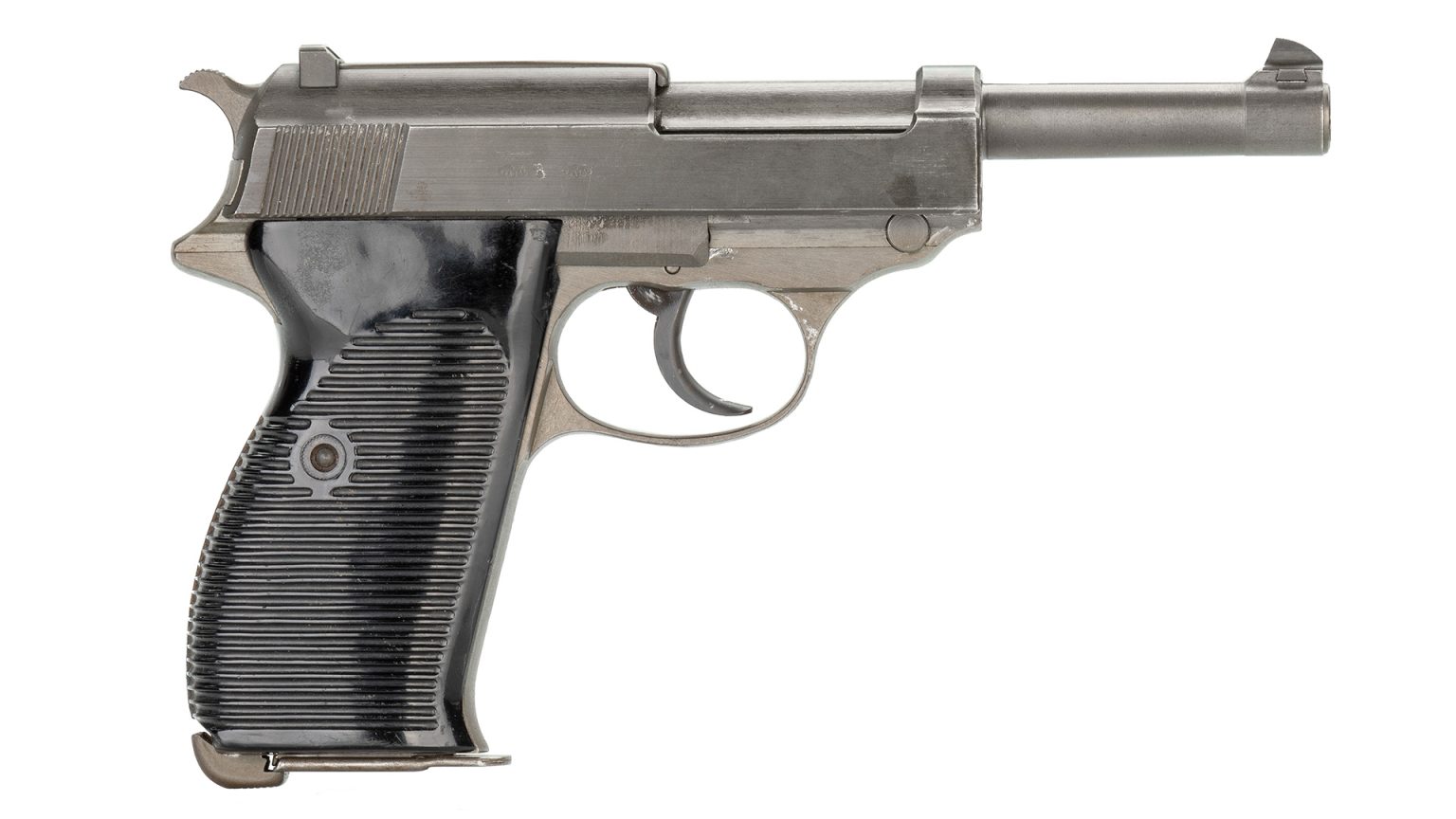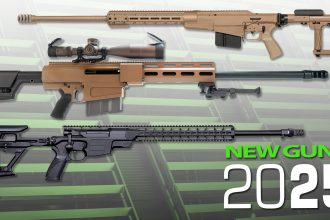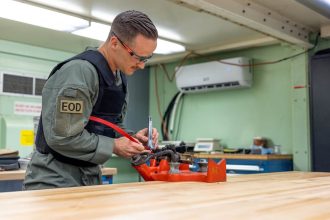In 1886, at the age of 28, Carl Wilhelm Freund Walther began a rifle-making concern in Zella-Mehlis, Germany. The eldest of his five sons, Fritz Walther, assumed control of the Walther factory in 1915, upon the death of his father. It was Fritz who, in 1908, started designing and producing semi-automatic pistols, leading to the introduction of the Walther PP in 1929 and the PPK in 1931.
His interest in perfecting the ultimate semi-automatic handgun gained impetus in 1931, when the German military was looking for a new 9 mm handgun to replace the expensive, time-consuming and difficult-to-manufacture P08 Luger. Walther had experimented with making a larger-frame PP in 9 mm, but soon focused on the requirements of the Army, which wanted an exposed barrel like the Luger, but something that was simpler in design and lower in cost.
Walther began to manufacture numerous prototypes with internal hammers, designated MP and AP models, for testing by the military. By 1938, with the nomenclature changed to “480” to designate the new pistol and featuring a freefloat barrel, exposed hammer, solid breechblock and twin recoil springs, the gun was officially adopted and initial orders placed under the designation P38 by the military—the Swedish military, that is. Germany would not formally adopt the gun until 1939 to replace the venerable Luger. Deliveries to the German Army began in late spring of 1939, just prior to the invasion of Poland in September and the start of World War II.
Initial deliveries of the P38 created quite the sensation in military circles when first introduced. Officers and enlisted alike scrambled to get one of the new pistols. And, the excitement was not confined to the German Army, which considered itself to have a monopoly on all P38s produced. The Luftwaffe (Air Force) began an earnest attempt to get Walther to contract for deliveries to its airmen, an effort which was rebuffed by the Army on numerous occasions until Walther was able to sell any pistols manufactured beyond the 10,000 a month stipulated by the Army contracts.
On the left side of the slide was a decocking lever/safety; with the lever in “safe” mode, the trigger will not actuate the hammer • Visually distinct and different than most modern pistols, the magazine release is located on the heel of the grip • An American Soldier holds a seized P38 as he watches over German prisoners.
The Nazi military comprised some 18 million soldiers, sailors and airmen during the Second World War. The need to provide arms was paramount to the conduct of its war efforts, and even at 10,000 pistols a month, Walther was unable to keep up with demand. In 1942, the Mauser company slowed down and eventually ceased production of the P08 Luger and began manufacture of the P38, marking them with the manufacture code “byf” and the last two digits of the year manufactured (i.e. byf 42 for a gun made at Mauser in 1942; in 1945 they were marked “svw 45”). Walther dropped the famous “WALTHER” banner logo on its pistols and used the code “ac” for the duration of manufacture during the war years.
Spreewerke GmbH Metallwarenfabrik, which was located in Berlin-Spandau, also began to produce the P38 in mid-1942 with the manufacture code of “cyq,” but never followed that code with a marked year of manufacture designation.
German military serial numbers followed a numbering system developed before the First World War. Most guns were marked with a manufacturer’s code and then a two-digit number representing the last two digits of the year of manufacture. The guns were then numbered starting with 0001 and continuing until number 9999. At that point the numbering system rolled back to serial number 0001, but with an alphabetical, lowercase-script suffix. So, collectors can read a number such as 2345d on a byf 44- marked gun as the 52,340th gun produced of that model in that factory, in that year. We have often received calls at the National Firearms Museum from someone who was sure they had serial number one of some German gun, only to be informed that the small suffix represented the 30,000th of that particular model.
Fritz Walther was able to initially manufacture the P38 at a cost equivalent to $4.13 in 1940, while the Luger cost almost twice as much at $7.83 each. (The U.S. M1911A1 cost $14, by way of comparison.)
Before the war ended in May, 1945, more than 1.2 million P38s had been manufactured. Walther made 580,000, Mauser completed 300,000 and Spreewerke completed almost as many as Mauser with 280,000 being manufactured by the war’s end.
For the P38, its end did not come with the unconditional surrender of May 8, 1945. French occupying forces continued to manufacture the P38 with sheet-metal grips for some time, and in 1957, the West German Bundeswehr adopted the Walther-manufactured P38 as its official sidearm. West German police units adopted the civilian model, named the P1, in 1963, and it remained in service until it was phased out in 2004.
Today, collectors have a plethora of P38s from which to choose to make their collections complete. Variations such as “ac44’s” written in two lines or the “svw45”-marked Mausers command high premiums, as do variations in the black phosphate finishes that varied during production. Holsters and accoutrements also add to the variety of collectible and desirable additions to any P38 collection. The presence of a genuine “bring-back” form, which identifies the make, model and serial number of the souvenired weapon with the name and unit of the Soldier wishing to keep it as a trophy can add a substantial amount to the value as well.
Read the full article here








